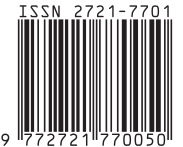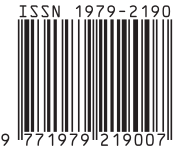Manipulasi Mikrohabitat Dengan Sistem Tanam Polikultur Sebagai Stabilizer Ekosistem Untuk Pengelolaan Hama dan Musuh Alami Pada Tanaman Bawang Merah (Allium ascalonicum Linn.)
Abstract
Shallot (Allium ascalonicum Linn.) constitutes one of the commodities that has important meaning for Indonesian people with the limiting factor in the production is the pest attack. One of these pest control techniques is by controlling technical culture of polyculture planting system. This research was conducted in July to October 2019 which was located in Banyuputih Village, Wringin District, Bondowoso Regency. This study used a Randomized Block Design (RBD) with six treatment, namely: P1 = polyculture of shallot + Lemongrass; P2 = polyculture of shallot + celery; P3 = Polyculture of shallot + mustard; P4 = Polyculture of shallot + Lemongrass + mustard; P5 = Polyculture of shallot + celery + mustard; P6 = Monoculture of shallot. Each treatment was repeated 4 times. Observation started at 30 days after planting. Data collection was done by observing directly on the sample plants. Sampling was carried out using Yellow trap and pit fall trap. Samples were taken at each plot 10 times with intervals of 4 days. Observations included collecting the pest insects and natural enemies that were found, counting the number of populations in each species, scoring towards the damage plants. The results showed that shallot planting by polyculture with different types of plants affected the population of pests and natural enemies as well as the level of diversity of insects in shallots. Planting shallots by polyculture has been proven to control pest populations compared to planting shallots by monoculture. Polyculture planting with two types of plants proved to be better than polyculture planting with three types of plants where the best treatment was found in P1, namely polyculture of shallot and lemongrass with the smallest pest population which was 17.5.
- Authors retain copyright and grant the journal right of first publication with the work simultaneously licensed under a Creative Commons Attribution License that allows others to share the work with an acknowledgement of the work's authorship and initial publication in this journal.
- Authors are able to enter into separate, additional contractual arrangements for the non-exclusive distribution of the journal's published version of the work (e.g., post it to an institutional repository or publish it in a book), with an acknowledgement of its initial publication in this journal.
- Authors are permitted and encouraged to post their work online (e.g., in institutional repositories or on their website) prior to and during the submission process, as it can lead to productive exchanges, as well as earlier and greater citation of published work.







